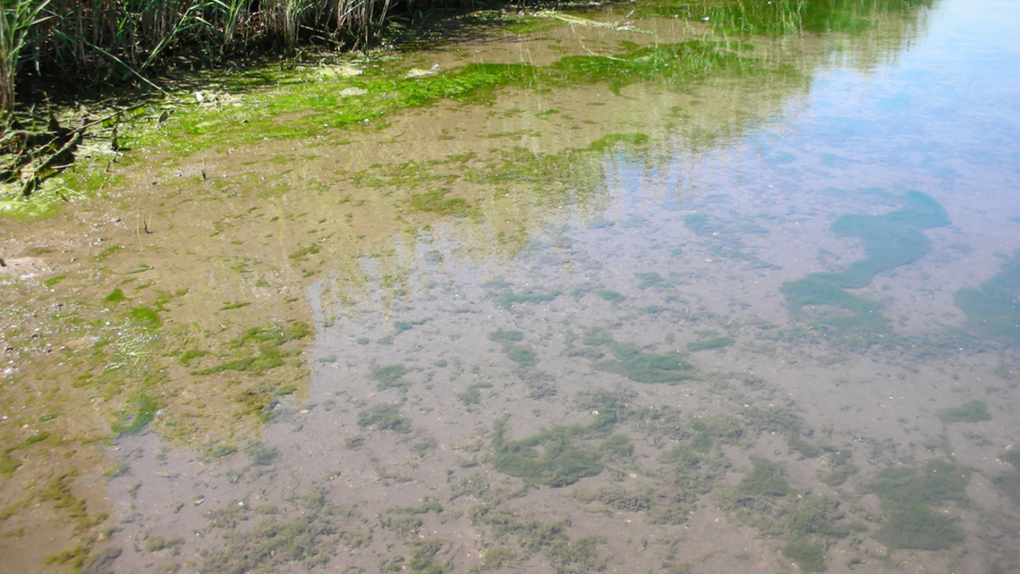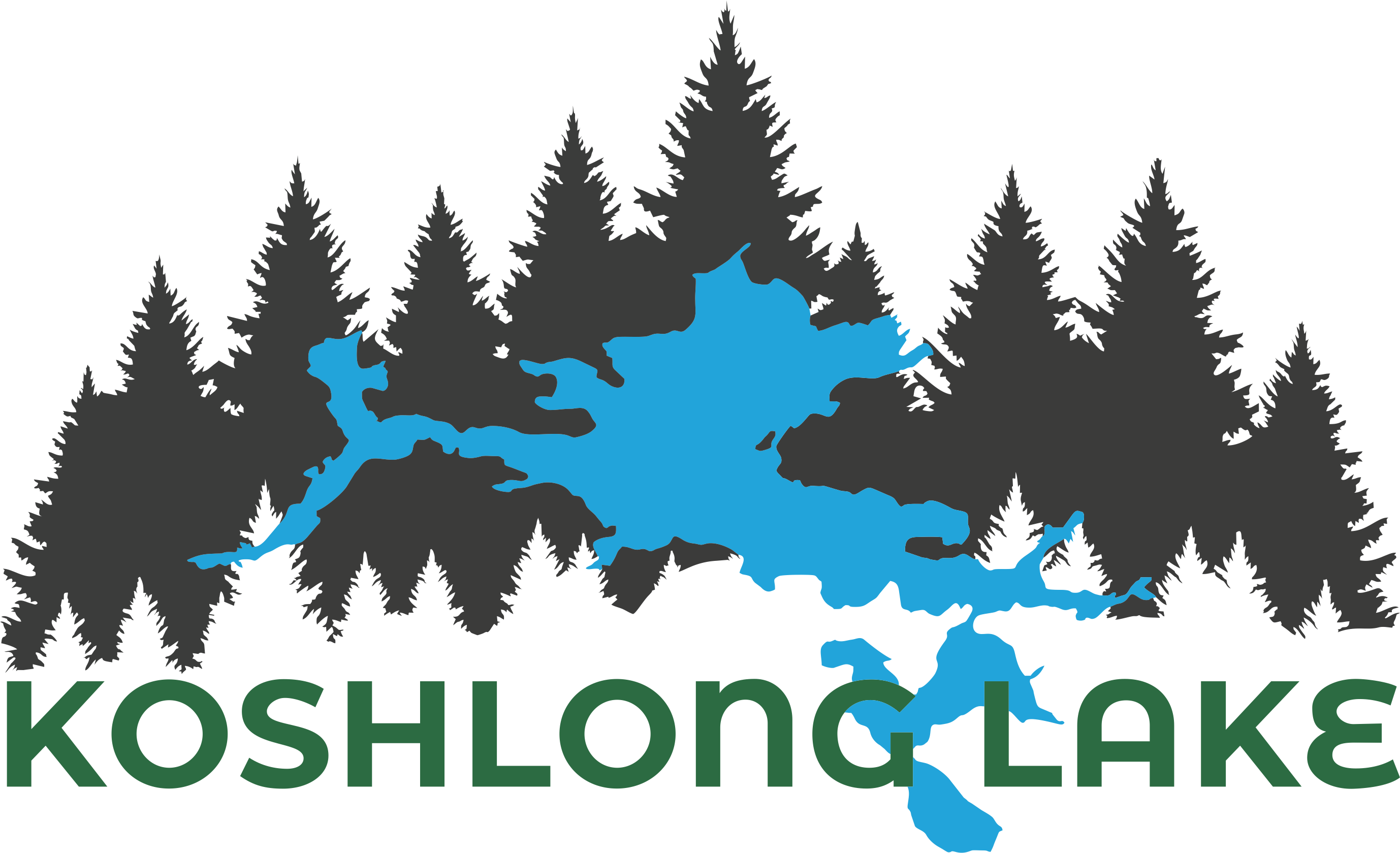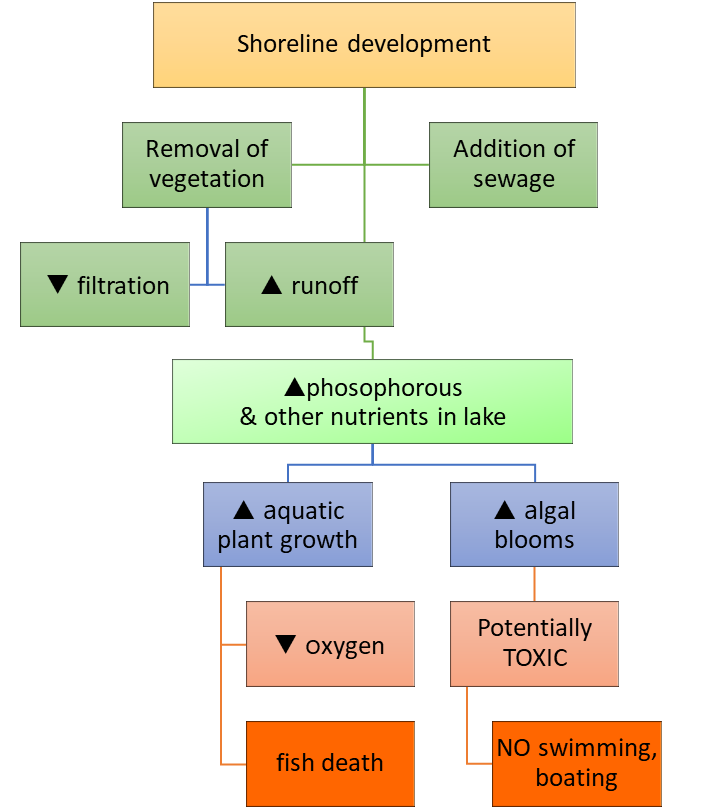threats
to lake health
Understanding Dangers to the Lake Environment
Inland lakes represent a major environmental, recreational, and economic resource. Increased demand for waterfront properties and the proximity of lakes in southern Ontario to major urban centres has resulted in considerable residential and commercial development on many of our lakes.
Lakes have a finite capacity to accommodate most types of development. One of the primary concerns regarding shoreline development is its impact on water quality -- which in turn threatens our water supply, our recreational activities, and the species of fish and wildlife that are able to survive in the lake. Read more below about how development harms water quality, then learn about Good Practices to mitigate our impact.
"An ounce of prevention"... Lake communities which fail to protect their water quality experience drastic reductions in property values and end up spending millions to control algal blooms and invasive species.
The key linkage between development and water quality is nutrient input to the lake. Development can increase the supply and availability of plant nutrients such as phosphorus and nitrogen. Phosphorus is the most essential nutrient in Canadian Shield lakes and is found naturally in all aquatic ecosystems. Lakes receive phosphorus from shoreline surface runoff, inflows from upstream wetlands, and from atmospheric deposition directly on the lake surface. Surface runoff from the watershed can pick up particles of soil and vegetation containing phosphorus which in turn drains into lakes and their tributary streams. The increase in phosphorous and other nutrients promotes the growth of algae and other aquatic plants. As the proliferating algae die off, they settle to the lake bottom and decompose. The decomposition process consumes oxygen which reduces the amount of dissolved oxygen in the bottom waters of the lake. |
|
Human activities in the vicinity of a lake introduce a supply of phosphorus sometimes referred to as artificial load. Domestic sewage contains high levels of phosphorus and nitrogen. A typical septic system on a lake includes a leaching bed system. This bed provides for an underground release of sewage effluent into the soil including phosphorus and nitrogen which can migrate through the ground and potentially find its way to the lake. Shoreline vegetation plays a key role in taking up these nutrients.
Disturbance of the natural shoreline through the removal of trees and undergrowth, and the additions of lawns, driveways, and other landscape features decrease the permeability of the ground. This ground hardening reduces the infiltration of water resulting in increased surface runoff into the lake. Increased soil erosion caused by the disturbance of the natural shoreline introduces additional sources of phosphorus into the lake.
This can result in excessive growth of aquatic plants and algae, which eventually settle to the bottom of the lake where they decompose through bacterial action. This decomposition process utilizes oxygen.

The worst case scenario - and an increasingly common one in Southern Ontario lakes -- is blue-green algae blooms. Blue-green algae are actually microscopic, plant-like bacterial organisms (cyanobacteria) that occur naturally in ponds, rivers, lakes, and streams. Blue-green algae are not normally visible in the water, but populations can rapidly increase when lake conditions are favourable to form a large scum called a bloom. These blooms discolour the water, produce unpleasant tastes, odours, and sometimes toxins which can make all swimming, boating and drinking of the lake water potentially deadly.
Combined, the increased nutrient load is a threat to our water supply, our recreational activities, and species of fish such as lake trout which require cold well-oxygenated water found at the bottom of deep lakes; without oxygen, lake trout become distressed and ultimately may not be able to survive.
- Home
- Environment
- Threats to Lake Health
Thanks to KLA member Rob Horsburgh for his photograph of Wallace Island used as the background photo throughout this site


